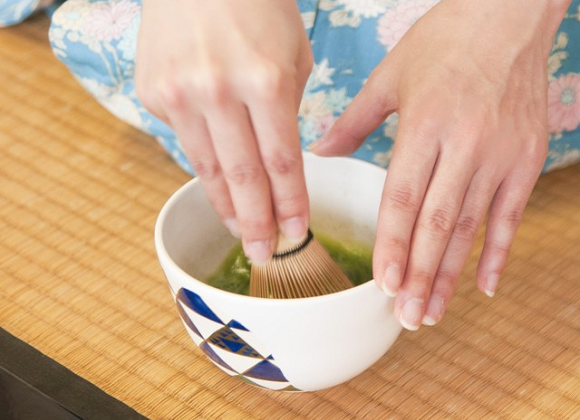
“The only people who think culture shouldn’t be shared are racists like you.”
Most of the Internet is a little late to the party, but a 2012 post on party planning blog The Gala Gals has sparked discussion online over the past few days. The post, which can be seen in its entirety here, contains pictures of a birthday party that a mother, living in Utah, organized for her elementary school-aged daughter and four guests, all of whom are fair-skinned and appear to be Caucasian.
The guests drank tea from porcelain Japanese-style cups and munched on Pocky and cakes decorated with cherry blossom motifs. The birthday girl herself, as seen in a photo included in the Gala Gals post, was dressed in a kimono, sewn by her mother, and wore heavy geisha-style makeup.
Some time later Tumblr user ginzers recently stumbled across the above photo and was upset by it, using the image sharing platform to post the condemnation “Teach children that this is not OK,” and later expanding upon her stance by saying:
“The makeup is clearly reflective of traditional Geisha makeup which is yellowface and therefore racist. Furthermore, the girl is wearing a kimono, a garment that has for ages carried cultural significance. Assuming that she is white how can you think this is ok? And cultural appropriation isn’t a thing? What rock do you live under? I suggest you educate yourself on the differences between cultural appreciation and cultural appropriation.”
The term “yellowface” is generally used to refer to makeup being used in an attempt to make a non-Asian theatrical performer look Asian, often with the connotation that the depiction results in a condescending caricature. That’s a little different from what’s going on here, as the intent of the makeup doesn’t seem to have been used to say “This is what Japanese people look like,” but “This is the style of makeup geisha wear,” and the heavy white powder, bright red lipstick, and jet-black eyebrows are all in keeping with common geisha cosmetics motifs.
The assertion that the kimono is “a garment that has for ages carried cultural significance” could probably also use a bit of clarification. As an indigenous Japanese article of clothing, it does indeed have a connection to Japanese culture. However, kimono, as indicated by the etymology of the word (“kimono” literally means “thing to wear”) have never had a connection to a specific cultural activity, ceremony, or class, and so Japanese society doesn’t have, nor ever has had, the belief that kimono should only be worn by certain ethnicities or other demographics, nor only by those engaging in certain activities.
As such, much of ginzers’ anger sounds like it may be coming from someone without much first-hand experience with Japanese culture. Someone who does have such experience, though, is Yuki, a Japanese woman who jointly runs the Tumblr account cheshireinthemiddle and responded to ginzers’ criticism at the bottom of the Tumblr thread below.
Yuki’s rebuttal reads:
“I am Japanese, in Japan at this very moment. The only people who think culture shouldn’t be shared are racists like you. A vast majority of Japanese people actually enjoy other people making an effort to spread and enjoy Japanese culture, and encourage it. Many make businesses in deliberately taking pictures of people in kimono. A common omiage (gift) for foreigners from Japanese people is traditional Japanese things such as kimonos, tea seats, shisa dog statues, etc. And to top it off, basically 80 percent of Japanese customs, traditions, and food, came from other countries. Japanese is an integration of different cultures, like America. Japan takes influences from places like Korea, China, Russia, and Europe. If Japan stuck to itself, there would be no tempura, Japanese tea, tea ceremonies, kabuki, Japanese bread, Japanese curry, J-pop, anime, cars, or modern fishing techniques. The picture is not “yellow face” they are not making fun of Asians. In fact, it looks like they put extra care and research into their work. The only reason that you have a problem with this is because that little girl is white and you know that it is acceptable on Tumblr to crap all over white people. The only racist here is you.”
Yuki jointly runs cheshireinthemiddle with Jackson, who is black, and the account’s self-introduction line proclaims “If our opinions don’t match up with your perception of what our races and genders should believe, that is your problem, not ours,” an attitude clearly reflected in Yuki taking issue with someone else judging who should and shouldn’t be allowed to take a participative interest in Japanese culture. It’s a sentiment a number of Japanese-language Twitter users seem to share:
▼ “Is it racist for a Caucasian girl to have a Japan-themed birthday party? My answer: No. Please enjoy Japanese things as much as you’d like! Help spread the word.”
白人少女が開いた「日本風の誕生日会」は人種差別か。 私の回答: そうは思わない、いくらでも楽しんでもらいたい!。 あなたも投票しませんか? https://t.co/0WiRC7NW6j @yurukuyaruから
— あの人@3回接種 (@NISHIOGINECO) August 7, 2017
▼ “That Japanese woman’s rebuttal is exactly right. I’m happy someone could put that so eloquently in English for us.”
ホントこの反論してくれてる日本人の言う通りで、こういうことを英語でキチンと反論してもらえて嬉しいなぁ。
— あそコロ♪優パパ★ (@asokoro_yupapa) August 7, 2017
https://t.co/hNXFHF7xbf
Though it would be nice if someone could tell The Gala Gals that even women’s kimono are supposed to be worn with the left flap over the right.
Sources: Yuruku Yaru, Imgur, Bored Panda, The Gala Gals, Tumblr/cheshireinthemiddle
Top image: Pakutaso
Insert image: The Gala Gals

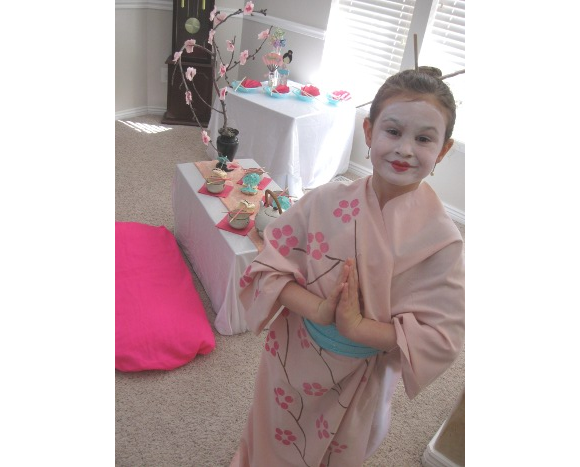
 Japanese Twitter seems to have no problems with Karlie Kloss’ “geisha” photo shoot
Japanese Twitter seems to have no problems with Karlie Kloss’ “geisha” photo shoot 10 things you didn’t know about geisha
10 things you didn’t know about geisha Is Ariana Grande “Asian Fishing”? Japanese netizens weigh in on the drama
Is Ariana Grande “Asian Fishing”? Japanese netizens weigh in on the drama Tokyo designer’s DIY Space Invaders kimono is retro fashion in more ways than one
Tokyo designer’s DIY Space Invaders kimono is retro fashion in more ways than one Eurovision winner criticized for Japanese cultural appropriation by everyone except the Japanese
Eurovision winner criticized for Japanese cultural appropriation by everyone except the Japanese Foreigner’s request for help in Tokyo makes us sad for the state of society
Foreigner’s request for help in Tokyo makes us sad for the state of society Japan’s summertime towelket pillowcases are even better with the addition of Ghibli stars【Photos】
Japan’s summertime towelket pillowcases are even better with the addition of Ghibli stars【Photos】 Japanese city loses residents’ personal data, which was on paper being transported on a windy day
Japanese city loses residents’ personal data, which was on paper being transported on a windy day Seaside scenery, history, and so many desserts on Yokohama’s Akai Kutsu【Japan Loop Buses】
Seaside scenery, history, and so many desserts on Yokohama’s Akai Kutsu【Japan Loop Buses】 Smash Bros. director Sakurai stabs Kirby in the face, has delicious justification for it
Smash Bros. director Sakurai stabs Kirby in the face, has delicious justification for it Ghibli Park now selling “Grilled Frogs” from food cart in Valley of Witches
Ghibli Park now selling “Grilled Frogs” from food cart in Valley of Witches Osaka governor suggests lowering voting age to 0 to curb population decline
Osaka governor suggests lowering voting age to 0 to curb population decline There’s a new world’s largest anime robot statue, and it’s not in Japan【Photos】
There’s a new world’s largest anime robot statue, and it’s not in Japan【Photos】 Tokyo Station’s perfect breakfast spot might just be this izakaya Japanese-style pub
Tokyo Station’s perfect breakfast spot might just be this izakaya Japanese-style pub Randomly running into a great sushi lunch like this is one of the best things about eating in Tokyo
Randomly running into a great sushi lunch like this is one of the best things about eating in Tokyo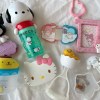 McDonald’s new Happy Meals offer up cute and practical Sanrio lifestyle goods
McDonald’s new Happy Meals offer up cute and practical Sanrio lifestyle goods Japanese ramen restaurants under pressure from new yen banknotes
Japanese ramen restaurants under pressure from new yen banknotes French Fries Bread in Tokyo’s Shibuya becomes a hit on social media
French Fries Bread in Tokyo’s Shibuya becomes a hit on social media Studio Ghibli releases new action figures featuring Nausicaä of the Valley of the Wind characters
Studio Ghibli releases new action figures featuring Nausicaä of the Valley of the Wind characters Red light district sushi restaurant in Tokyo shows us just how wrong we were about it
Red light district sushi restaurant in Tokyo shows us just how wrong we were about it New private rooms on Tokaido Shinkansen change the way we travel from Tokyo to Kyoto
New private rooms on Tokaido Shinkansen change the way we travel from Tokyo to Kyoto Tokyo Tsukiji fish market site to be redeveloped with 50,000-seat stadium, hotel, shopping center
Tokyo Tsukiji fish market site to be redeveloped with 50,000-seat stadium, hotel, shopping center Beautiful Ghibli sealing wax kits let you create accessories and elegant letter decorations【Pics】
Beautiful Ghibli sealing wax kits let you create accessories and elegant letter decorations【Pics】 Studio Ghibli releases Kiki’s Delivery Service chocolate cake pouches in Japan
Studio Ghibli releases Kiki’s Delivery Service chocolate cake pouches in Japan New definition of “Japanese whiskey” goes into effect to prevent fakes from fooling overseas buyers
New definition of “Japanese whiskey” goes into effect to prevent fakes from fooling overseas buyers Our Japanese reporter visits Costco in the U.S., finds super American and very Japanese things
Our Japanese reporter visits Costco in the U.S., finds super American and very Japanese things All-you-can-drink Starbucks and amazing views part of Tokyo’s new 170 meter-high sky lounge
All-you-can-drink Starbucks and amazing views part of Tokyo’s new 170 meter-high sky lounge More foreign tourists than ever before in history visited Japan last month
More foreign tourists than ever before in history visited Japan last month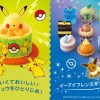 New Pokémon cakes let you eat your way through Pikachu and all the Eevee evolutions
New Pokémon cakes let you eat your way through Pikachu and all the Eevee evolutions Disney princesses get official manga makeovers for Manga Princess Cafe opening in Tokyo
Disney princesses get official manga makeovers for Manga Princess Cafe opening in Tokyo Sales of Japan’s most convenient train ticket/shopping payment cards suspended indefinitely
Sales of Japan’s most convenient train ticket/shopping payment cards suspended indefinitely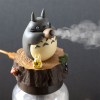 Sold-out Studio Ghibli desktop humidifiers are back so Totoro can help you through the dry season
Sold-out Studio Ghibli desktop humidifiers are back so Totoro can help you through the dry season Japanese government to make first change to romanization spelling rules since the 1950s
Japanese government to make first change to romanization spelling rules since the 1950s Ghibli founders Toshio Suzuki and Hayao Miyazaki contribute to Japanese whisky Totoro label design
Ghibli founders Toshio Suzuki and Hayao Miyazaki contribute to Japanese whisky Totoro label design Doraemon found buried at sea as scene from 1993 anime becomes real life【Photos】
Doraemon found buried at sea as scene from 1993 anime becomes real life【Photos】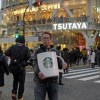 Tokyo’s most famous Starbucks is closed
Tokyo’s most famous Starbucks is closed One Piece characters’ nationalities revealed, but fans have mixed opinions
One Piece characters’ nationalities revealed, but fans have mixed opinions We asked a Uniqlo employee what four things we should buy and their suggestions didn’t disappoint
We asked a Uniqlo employee what four things we should buy and their suggestions didn’t disappoint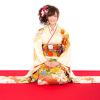 Princesses, fruits, and blacksmiths: Study reveals the 30 most unusual family names in Japan
Princesses, fruits, and blacksmiths: Study reveals the 30 most unusual family names in Japan Does a denim kimono look or feel good? Our kimono neophyte reporter finds out【Photos】
Does a denim kimono look or feel good? Our kimono neophyte reporter finds out【Photos】 Tokyo retro kimono photography service provides customers with gorgeous snapshots of the past
Tokyo retro kimono photography service provides customers with gorgeous snapshots of the past Are Japanese B-Stylers racist? Jim Jeffries investigates cultural appropriation in Japan 【Video】
Are Japanese B-Stylers racist? Jim Jeffries investigates cultural appropriation in Japan 【Video】 Beautiful line of Kimono Pouches let you add traditional Japanese style to any outfit
Beautiful line of Kimono Pouches let you add traditional Japanese style to any outfit Japanese train history plays out like a sliding doors rom com in 100 Years Train ad 【Video】
Japanese train history plays out like a sliding doors rom com in 100 Years Train ad 【Video】 Eye-opening tutorial reveals daily makeup routine of a Japanese kuro-gyaru【Video】
Eye-opening tutorial reveals daily makeup routine of a Japanese kuro-gyaru【Video】 Kiss me~ Delicious edible lip gloss celebrating Barbie’s 55th birthday
Kiss me~ Delicious edible lip gloss celebrating Barbie’s 55th birthday Japanese fashion brand Keiko Tagai turns beautiful old kimono into stylish hats
Japanese fashion brand Keiko Tagai turns beautiful old kimono into stylish hats Minions cosplay as Japanese kabuki characters in new merchandise collection
Minions cosplay as Japanese kabuki characters in new merchandise collection Japanese rock star Hyde’s Harley Quinn Halloween costume is the best we’ve seen this year
Japanese rock star Hyde’s Harley Quinn Halloween costume is the best we’ve seen this year “Face Hiring”: Japanese cosmetics company Isehan’s new hiring campaign is causing a stir
“Face Hiring”: Japanese cosmetics company Isehan’s new hiring campaign is causing a stir Kimono Project is creating a different kimono to represent every country on Earth【Photos】
Kimono Project is creating a different kimono to represent every country on Earth【Photos】 Suntory encourages responsible drinking with bizarre guide to declining party invitations
Suntory encourages responsible drinking with bizarre guide to declining party invitations Japanese upcycle brand makes ’80s obi sandals in collaboration with United Tokyo 【Photos】
Japanese upcycle brand makes ’80s obi sandals in collaboration with United Tokyo 【Photos】 Drink with a Japanese geisha at an online drinking party
Drink with a Japanese geisha at an online drinking party
Leave a Reply